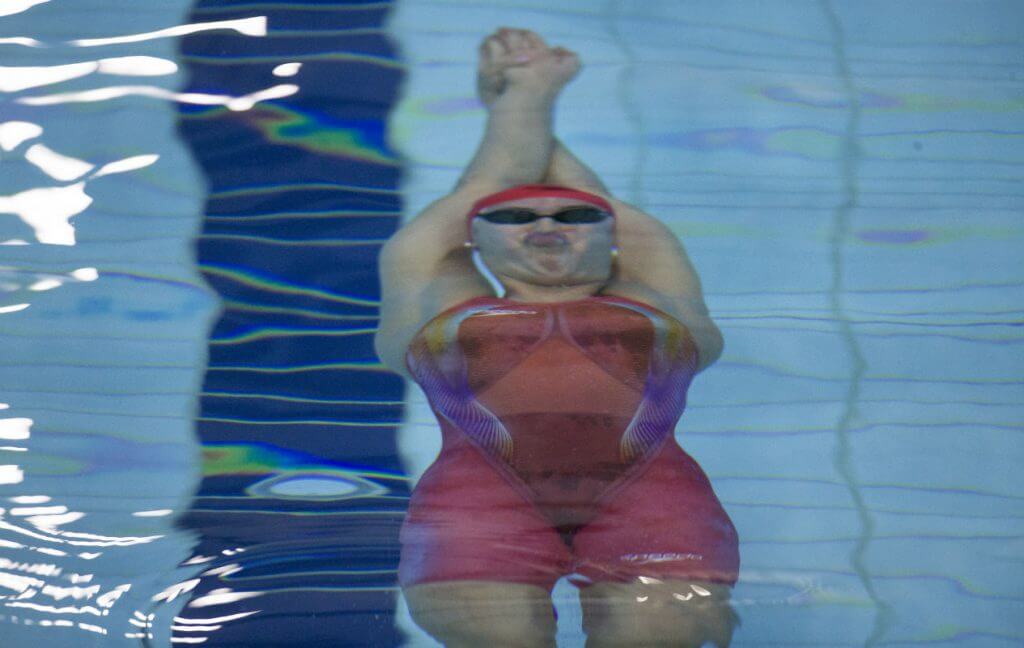100 Backstroke Race Analysis Where Kylie Masse Broke The World Record

The current women’s 100 backstroke world record was the longest standing record in women’s swimming, having been set by Gemma Spofforth in 2009 in Rome during the supersuit era. Heading into today’s event, Canadian Kylie Masse was poised to break that record, posting a time .06 off the WR in the semi-final.
The race wasn’t over yet though; Masse had some major competition to contend with. Kathleen Baker, the Silver medalist in Rio, was looking to seize the opportunity to take the gold, with Rio gold medalist Katinka Hosszu scratching this year. Emily Seebohm was also looking for a podium moment, having fell just short at Rio. With a WR ready to be broken and a strong field all aiming for the podium the final was shaping up to be an exciting race.
Race Analysis
As we dig into the numbers, immediately a curiosity comes to light. There seems to be two distinct styles being utilized in this race. 1st, 2nd, 7th and 8th place finishers all raced a faster stroke rate with a shorter DPS, while those in places 3rd through 6th raced with longer, stronger strokes, getting more distance from each.
Both strategies have their strengths and weaknesses. For instance, the slower, stronger stroke will conserve energy further into the event, but is only valuable if the athlete is able to produce the speed to match. Olivia Smoliga is a prime example of this, finishing in 4th place. She registered almost the lowest stroke count, the fastest speed, and the second highest DPS in the field throughout the race. However, her stronger, more efficient stroke was never quite able to reach the speed of the top three finishers, leaving her in the lurch for a podium position. If she can work on speeding up her long, strong strokes – taking potentially 1-2 more per length – she would be better positioned to challenge those at the the top of field.
Conversely, swimming a shorter, faster stroke works wonderfully if you have the endurance to maintain it throughout the race. This point is proven for us if we examine both Kathleen Dawson and Kylie Masse’s performance together. Both swam 35 strokes, their speed only .01s apart. Masse also posted a .8s faster stroke rate, and was able to move slightly faster with a .05s better DPS in the first half. This isn’t enough of a gain to explain the difference between a gold medal and 8th place though. The big difference there was Dawson’s ability to maintain this momentum through the second half of the race. They both increased their stroke rate in the second half, however Masse was able to produce a stroke rate, speed and DPS to match, while the wheels seemingly fell off for Dawson, who drastically lost speed and DPS. To close this gap, Dawson should work on either increasing her endurance to sustain the faster, more frequent strokes, or slow down and lengthen her stroke to move further with less effort.
While Kylie Masse, the beloved Canadian record breaker, swam a much faster-paced race than most in the front half, she was able to introduce some of that longer, stronger stroke approach in the second half, pulling from reserves to pull in the record and the gold. She was behind at the end of the first 50m, trailing Baker and Seebohm, and only ahead of Smoliga by .01s. However in the second half, she was able to maintain more speed without increasing her stroke count as much as the others, which ultimately gave her the edge she needed to break the record and secure the gold medal position on the podium.
This race was fascinating not only because Canada broke a long standing record, but because we can see the value in really understanding individual strengths and weaknesses through the performances here.
See all of the Fina World Championships race analysis from TritonWear here: http://www2.tritonwear.





Dorian Gandin
0.2 , only on the turn haha
Excelent and fully understandable for all. One of the main goal in swimming! Optimize technique! Thanks.
기록은 SC x SR임을 명심합시다.
Katie Madden
Gabby Braman, Bridget Camblin, Danika Ritz – pretty interesting (if you’re a swimming geek!)
Jessica Stangret, Ellie Thompson and Alison Tallen. Great info in this article!
Hannah Rafel